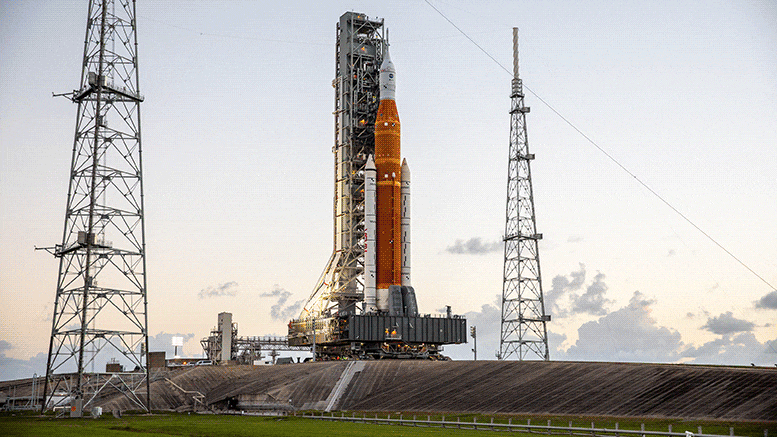The Artemis I Mega Moon rocket is on the launch pad at[{” attribute=””>NASA’s Kennedy Space Center in Florida. This powerful Space Launch System (European-built module that supplies electricity, propulsion, fuel, water, and air in addition to keeping the spacecraft operating at the right temperature.
Artemis I mission overview. Orion is NASA’s next spacecraft to send humans into space and is part of the Artemis program. It is designed to send astronauts farther into space than ever before, beyond the Moon and to the lunar Gateway. Credit: ESA–K. Oldenburg
Artemis to the Moon
The European Service Modules are made from components supplied by over 20 companies in ten European Space Agency (ESA) Member States and the United States. As the first European Service Module sits atop the SLS rocket on the launchpad, the second is only 8 km (5 miles) away, as it is currently being integrated with the Orion crew capsule for the first crewed mission – Artemis II. The third and fourth European Service Modules – that will power astronauts to a Moon landing – are in production in Bremen, Germany.

Contributions in Europe for the European Service Module that is powering the Artemis missions around the Moon. Credit:
ESA–K. Oldenburg
The Artemis program is an international endeavor to build a permanent outpost around and on the Moon. Modules for the lunar Gateway are being built in the United States and Europe, with the first European module – International Habitat – in production in Turin, Italy, and set for launch on the fourth Artemis mission alongside the Orion spacecraft.
The first Artemis launch this week is without humans, but three mannequins have been placed in the spacecraft’s seats to conduct scientific research. Fitted with more than 5600 sensors, two mannequins will measure the amount of radiation astronauts could be exposed to in future missions with unprecedented precision. ESA is also including active radiation dosimeters in the Crew Module to get more data on how radiation levels change on a mission to the Moon – building on the leadership developed over decades of radiation research on the International Space Station.

Logo for the first European Service Module (ESM) that is powering NASA’s Orion spacecraft to send humans into space and the Moon as part of the Artemis program. Credit: ESA
Dates
With a November 16 launch, the three-week Artemis I mission would end on December 11 with a splashdown in the Pacific Ocean. The European Service Module detaches from the Orion Crew Module before splashdown and burns up harmlessly in the atmosphere, its job complete after taking Orion to the Moon and back safely.
Backup Artemis I launch dates include November 19. Watch the launch live on ESA Web TV.
The Orion spacecraft equipped with the European services module will fly farther from Earth than any previous human-classified spacecraft. This video provides an overview of Artemis’ first unmanned mission, focusing on the European Space Agency’s European Services Module that operates the spacecraft. The spacecraft will fly past the moon, using the moon’s gravity to gain speed and propel itself 70,000 kilometers from the moon, nearly half a million kilometers from Earth, farther than any human travel, as it will travel in a distant retrograde flight. goes around the moon. On its return journey, Orion will make one more flyby of the Moon before returning to Earth. The total trip will take about 20 days and end with the water flowing into the Pacific Ocean without ESU – it separates and burns harmlessly in the atmosphere. Credit: ESA – European Space Agency


